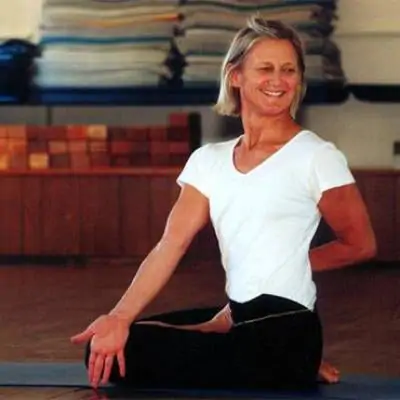It was a feeling you got in class of your personal potential and the possibility of change that drew more and more practitioners into his method.
When I first started yoga in 1976, BKS Iyengar was not yet the yoga household name he later became. But the immediate effect of his Yoga method on me was enormous. He certainly also made a huge impact on the growing number of people who had been curious and brave enough to attend his classes when he first started visiting western countries in the 1950s.
He was already known for his fierceness in classes, his unwavering focus, and the way he demanded you go to your utmost in every class. And, undoubtedly, his reputation for revitalising yoga in this modern age was growing. But it seemed even then that the high respect accorded to his teachings was due in considerable part to the experience you had when immersing yourself in Iyengar Yoga. It was a feeling you got in class of your personal potential and the possibility of change that drew more and more practitioners into his method.
After a class with Guruji you generally spoke more about what you had learned, about your experiences in yoga that day, and less about his unquestionable and obvious charisma, though this was plainly in evidence. The BKS Iyengar stories one heard were primarily about the practice, about a relentless teaching style which extracted the very best from each student, and the changes, at first physical and later more internal, that we as Iyengar Yoga practitioners felt almost immediately after starting to practice in this way.
He had, without doubt, an enormous energy, presence, and personality, but he always transmitted yoga. This seemed to be his mission, his drive. He wanted everyone to have the chance to transform themselves in the way he had.
He often would say that he was just an ordinary man, touched by yoga. We, his students, didn’t really see it like that as his depth of knowledge and mastery of the subject were unrivalled. But his point was clear: practice, practice, and practice. And if doubts appear, keep practising alongside your doubts, and then see which one wins out.
His daughter, Geetaji, an extraordinary yoga teacher herself, once spoke about her father’s practice discipline. She said that in times of extreme poverty, Guruji practised. In times of plenty and world renown, Guruji practised. Practice and intelligent application of one’s efforts were the key. Simple, and ever-challenging.
Yoga Vastu aims at facilitating practice for all levels of students, at encouraging learning in the Iyengar method, and at motivating us all towards the deeper study of yoga.
We, the contributors, can only present what we have learned from our own practice, from our own experiences, though fully based on and extracted from Guruji’s generous, passionate, and ingenious teachings.
Our deep respect and love for Guruji and the gratitude we feel for all that we have received from him are behind this endeavour. Through Yoga Vastu, we simply wish to pass on something of what we have understood over our years of practice of Iyengar Yoga in the hope that this rich tradition continues to grow.
It is of course not comprehensive or definitive. It is primarily a compilation and expression of our yoga learning and experiences that we hope will be of benefit to other practitioners.





